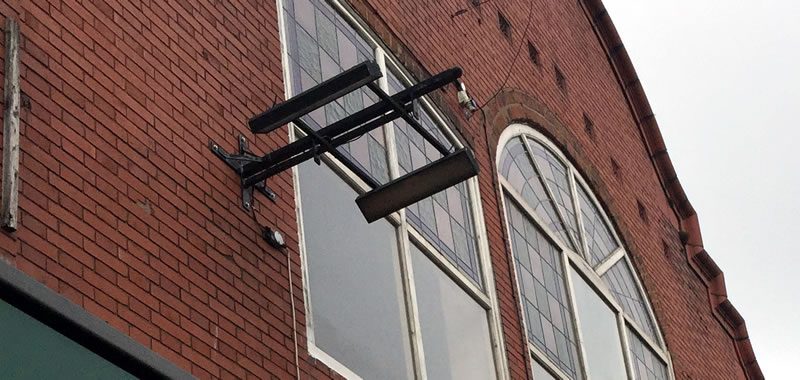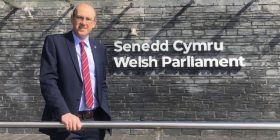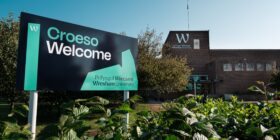Street and pub names of Wrexham analysed for historic slave trade links and other problematic associations

Over 200 Welsh statues, streets and buildings have been found to have connections to or supported the slave trade, a nationwide audit has found.
In July, following the death of George Floyd and a month of action by the Black Lives Matter movement, First Minister Mark Drakeford ordered an urgent audit of statues, street and building names to address Wales’ connections with slavery and the slave trade.
The investigation also looks at people “who require examination having been highlighted by campaigners”, including Winston Churchill, Christopher Columbus, Mahatma Gandhi – and locally famous Elihu Yale. The latter was the topic of a petition earlier this year requesting that the ‘top’ Wetherspoons pub renames, after a sign outside the pub was removed in 2017 after it was defaced with the word “racist”.
The audit published today “shows the slave trade was embedded in the Welsh economy and society and reflected in many of our statues, street and building names today.” The Welsh government has said.
In total 209 monuments, buildings or street names, located in all parts of Wales, have been found to commemorate people who were directly involved with the slavery and the slave trade or opposed its abolition.
The report itself appears to be a highly detailed piece of work with local research taking place on a per-location basis and local context also being taken into account.
The report itself does not contain any recommendations, but will likely be used by Welsh Government as an evidence base as and when further steps are considered. The report’s authors, a range of historians, note: “The terms of reference for this project separate the audit stage from issues arising, which might form the basis for a second stage. The present document seeks to capture information, not provide a set of answers. Any views, comments and suggestions for next step actions should be sent to [email protected]”.
First Minister Mark Drakeford said: “While the tragic killing of George Floyd happened almost 4000 miles away, it sparked global action that shone a light on racial inequality in society today.
“That inequality exists in Welsh society too and we must work towards a Wales which is more equal. To help us do this, we need a clear understanding of the legacies of the slave trade and the British Empire. This audit provides important evidence which helps us establish an honest picture of our history.”
“This is not about rewriting our past or naming and shaming. It is about learning from the events of the past. It is an opportunity for us to establish a mature relationship with our history and find a heritage which can be shared by us all.”
“This is the first stage of a much bigger piece of work which will consider how we move forward with this information as we seek to honour and celebrate our diverse communities.”
The report has a range of traffic light marked names and ratings in the local area, with the colour coding scheme explained as: “Red-amber-green colour-coding suggests distinctions of certainty and/or culpability to aid consideration.
“For clarity, items are included (marked green) that it was concluded do not commemorate the individuals in question – for example where a different family member or estate was deemed to be referred to.
“Uncertainty inevitably remains over some streets that take a surname only. While every effort has been made to be accurate, further instances and evidence will continue to come to light. The Task and Finish Group will be pleased to receive information.”
“Red” marked local names include:
- King William Inn in Summerhill, due to association with William Duke of Clarence
“Yellow” marked names include:
- Cunliffe Arms pub in Wrexham, with it noted the family crest is on the Marston’s pub logo.
- Duke of Wellington Inn, Ruabon “Name alone implies the Duke is commemorated”
- Duke of Wellington in Trevor, “Name alone implies the Duke is commemorated”
- The Elihu Yale Wetherspoons, “Weatherspoons specifically named after Yale.”
- Yale Hostel, Erddig Park.
- Churchill Drive, Abenbury, “Part of post WWII public housing estate possibly named after Churchill”
- Churchill Drive, Caia, “Part of post WWII public housing estate possibly named after Churchill”
- Cunliffe Street, Wrexham could be “connected indirectly with the Sir Foster Cunliffe of Wrexham (died 1834) judging by the nearby Foster Street.”
- Nelson Street, Offa, is seen as a direct ‘commemoration’ of Horatio Nelson
- Peel Street, Offa, which is linked to Robert Peel, as other nearby streets (Cobden, Bright and Villiers) are named after political figures.
- Stanley Road, Rhos, is thought to have links to Henry Stanley as it is from around 1910 and therefore could be commemorating him.
- Wellington Road, Offa is seen as ‘commemoration’ of the Duke of Wellington
- Yale Grove in Acton, Yale Park in Rhosddu, Yale Street in Rhos and Yale Walk in Offa are all deemed as “Name sufficient probably to confirm commemoration” of Elihu Yale.
“Green” investigated names include:
- Cunliffe Centre in Rhosddu, with it noted “An enablement day centre. It is not clear why this takes the name Cunliffe.”
- Clarence Road, Rhosddu with it decided there is no link to William Duke of Clarance.
- Cunliffe Walk, Rhosddu, unlike nearby Cunliffe Street is not marked as problematic as it is ‘named for Cunliffe’s grandson Robert who was MP’, as nearby Kenyon is named after another local MP.
- Peel Close in Overton is not deemed as having a connection with a former Prime Minister unlike the Offa street
- Worcester Road, Bangor-is-y- Coed is deemed as a geographic reference due to neighbouring streets named after English border towns; Chester, Ludlow, Whitchurch etc, rather than Marquess of Worcester, 6th Duke of Beaufort
- Stanley Street in Ruabon is not thought to have links to Henry Stanley.
- Wynn Avenue, Rhosddu and in Ruabon are not seen as having links to Watkin Wynn-Williams.
People named in the report with local links have explanatory notes as to their reasons for inclusion as below:
- The Cunliffe family, who were the largest of the Liverpool slave traders.
- John Kewley and his wife, who claimed compensation at emancipation for property on St Lucia and was probably from the family of slave traders of the same name in Liverpool. He gave his address at the time of his claim as Stansty Lodge, Wrexham.
- Jacques Nembhard, who inherited a portion of estates in Jamaica on the death of his father in 1821. He married Jane Lloyd Jones of Plas Madoc, Wrexham.
- James Stapleton, inherited income from plantations in St Kitts from his grandfather Sir William Stapleton
- The Tarletons, who were among the richest slave-trading families in Liverpool. The name Tarleton was briefly associated with Penley Hall, Wrexham, built around 1800 and destroyed by fire in 1935.
- Reverend George Warrington, a clergyman from Byn-y-ffynnon, Wrexham, who with his wife received £3,000 to relinquish claims on his father- in-law’s estate of Pantre Pant in Jamaica in 1789.
- Watkin Williams, MP for Montgomeryshire and Flint Boroughs, married Elizabeth Stapleton, one of the daughters and co-heirs of James Russell Stapleton.
- Elihu Yale, during his time in Madras the East India Company was dealing in enslaved people, both African and Indian. His personal involvement in slavery is disputed. He appears never to have owned or traded in slaves himself but he was responsible for controls of slaves as Governor.
- Ellis Yonge, Married Penelope Stapleton and thereby took an interest in the West Indies plantations of the Stapleton family. His family home was Bryn Iorcyn and he owned Acton Hall.
- Frederick Douglass, who was born into slavery in Maryland. After escaping in 1838 he became famous as a great orator and campaigner for abolition. He spent two years on speaking tours in the British Isles in the 1840s, with large audiences. During his visit he became legally free when supporters bought his freedom from his American ‘owner’. There are plaques marking places of his speeches in London, Edinburgh, Cork and Waterford but none are known to mark places where he spoke in Wales. He spoke at Wrexham Town Hall on 9 October 1846 where the public meeting was ‘densely packed until near midnight’.
Gaynor Legall, Leader of the task and finish group who led the audit, said: “This a piece of work that I am immensely proud of because it gives a very thorough, factual account of Wales’ involvement in the Slave Trade and expands our knowledge of the history of Wales. It will hopefully lead to children learning the complete history, warts and all.”
The audit and full list can be found here: gov.wales/slave-trade-and-british-empire-audit-commemoration-wales
Top pic: The Elihu Yale pub subject to direct action in 2017 – more on “Pub Sign Removed As Word ‘Racist’ Scrawled On It – Hours After Tweets Claim ‘Slave’ Issue”
Spotted something? Got a story? Email [email protected]












